
Sa-Sh
SALSOLA SODA
For the moment, there seems to be some kind of a hype around this plant. I grew it years ago, and, I must say I will probably never grow it again. I just didn’t like the taste, it was like eating some soap-salad-water, with the soap being dominant..
As far as I remember, the plants weren’t difficult to grow out, seeds had to be kept wet, and they germinated pretty quickly. I gave them a position that was a bit shaded during the afternoon, but they didn’t seem to care. Seed formation was very very late, so I didn’t get any seeds (these are short-lived, so sow them the next year, don’t keep them for two or more years).
SCUPLIT
A well-known plant in Italy , scuplit (silene inflata) is mainly used as a salad ingredient. The leaves are added to all sorts of other salad leaves, but can be cooked as well. Some reports say they contain saponins, so be careful, and don’t use too much! (I never had a problem with it).
The plants are as easy to grow as any other common silene, meaning they can be a bit invasive... They reseed (!) and can be annoying, but sometimes I like that...
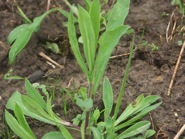
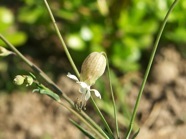
SCOLYMUS HISPANICUS
If you like prickly plants, this is one you should have. Scolymus seems to have been grown more in the middle-ages, some books even mention a more widespread use until the 1930’s. The edible part are the roots, but, I must admit, I never tried them... The plants grow rapidly, but some varieties can take up the necessary space. And, as I told you already, they are prickly , and not just a bit...
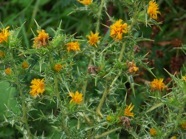

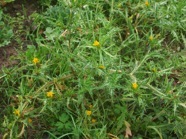
SEA KALE
Wonderful spring vegetable, sea kale was grown a lot during Victorian times in the UK. It disappeared a bit nowadays, and that’s a shame, because it’s really wort growing, nice , tender shoots that are blanched are one of the first delicacies of the year. Unfortunately I had to conclude it needs very sandy soil and isn’t really suited for my heavy and moist retaining soil . But we’ll keep on trying!
SHALLOT
There’s a bit of controversy whether shallots are the same as potato onions or not...The most recent findings seem to indicate they are the same.. Anyway, the growth habit and eating qualities are the same, so... Shallots prefer sunny and rather moist places, just as onions do (they also thrive better on ground that has been fertilised the year before). Many shallot varieties can be planted before the winter, they are very cold hardy. Plant the small bulbs, and use the big ones for eating, small bulbs will produce more big bulbs when planted, whereas big bulbs will produce more smallish bulbs....Can you follow? Again, lots and lots of varieties; red-skinned, grey-skinned, ...
I obtained a very rare variety called ‘Klimt’, it’s really very productive and good tasting, and has an amazing storage ability, up to June!
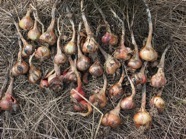
SHEPHERDS PURSE
This herb is actually found in many places, it’s a low-staying plant with the familiar purse-look-alikes seedpods. But this plant can perfectly be eaten as well, and there seems to be a big-leaf selection grown in China (I just received some (old ) seeds, so I may find out how big this leaves really are). And, it’s a general weed, so there won’t be any problems growing this..
SHUNGIKU
Or chop suey greens (chrysanthemum coronarium). A plant that’s used a lot in oriental kitchens, for eating raw, stir-frying or boiled and served as spinach. Give the plants a sunny spot, a bit of warmth and they will thrive and produce loads of edible leaves. From mid-summer on you will be rewarded with nice looking flowers. There are some other edible chrysanthemums, but I never tried these
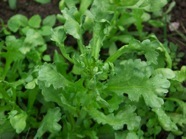
SKIRRET
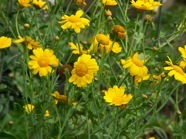
This is slowly becoming one ot the ‘lost crops of Europe’, and that’s deplorable. Skirret (sium sisarum) are a wonderful carrot/parsnip alternative and have the advantage of being perennial, so you don’t have to sow this every year. The roots are mainly eaten during winter, they have an excellent sweet, starchy flavour.
The plants are mainly propagated by selecting and replanting the roots, take the best-looking and tastiests for replanting, and you will be rewarded later with better looking plants and tastier roots. Sowing is also possible, but you need seeds that are fresh, and have been taken from at least two-year old plants .

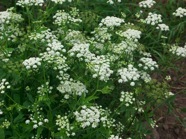

SESAM
There we have another one demanding lots of warmth, I tried a few varieties, but they’re all a bit delicate to grow in our climate, it works in a greenhouse, but again I don’t want to sacrifice precious space...
Everybody knows the use of the seeds, but the leaves can also be eaten, prepared warm. Off course, if you pick lots of leaves, seed-set will be a bit less..

